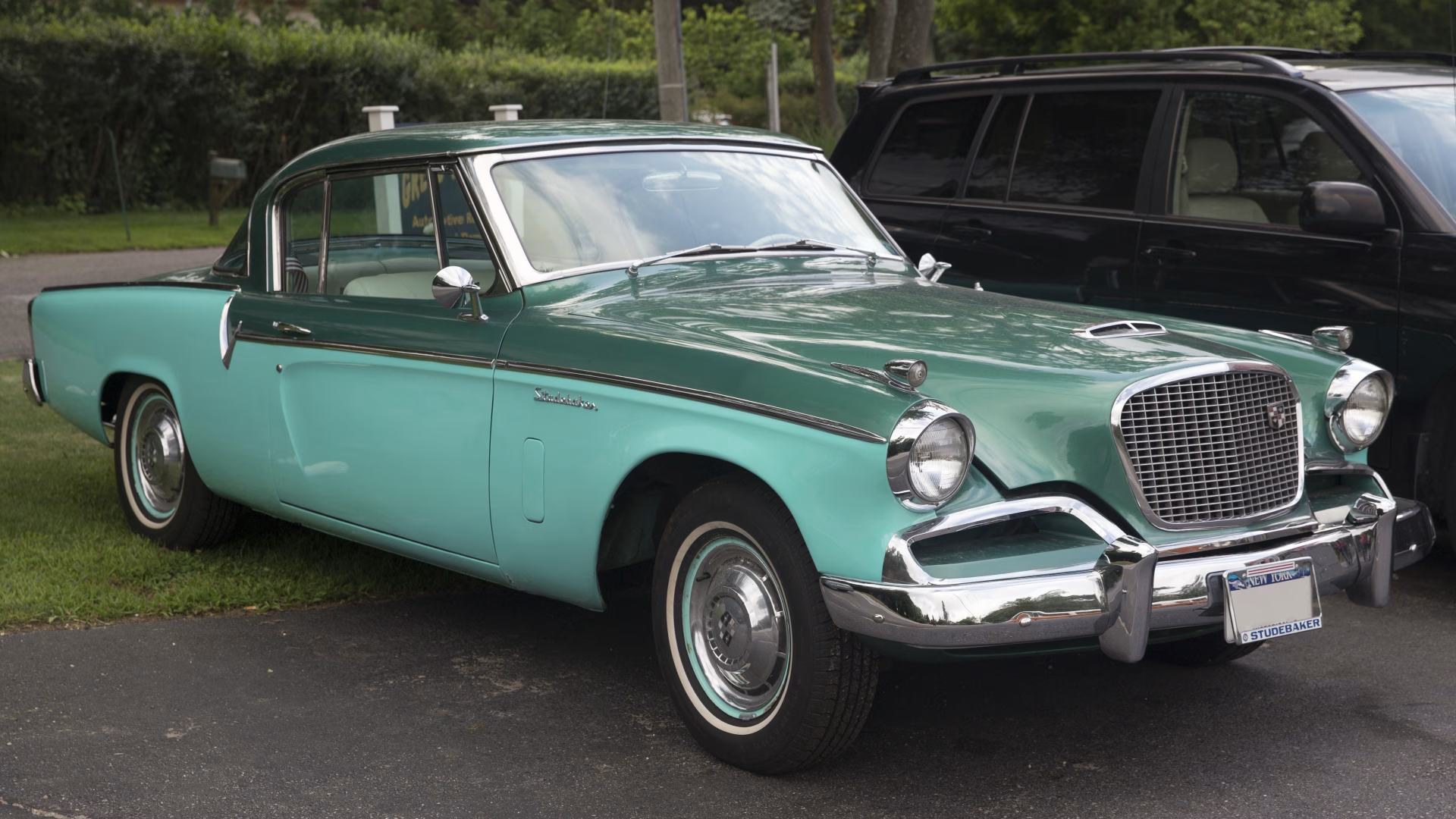Studebaker: From Covered Wagons to Avant-Garde Design
The name Studebaker is a pillar of American industrial history, a story that begins long before the invention of the automobile itself. From its origins as the world's most respected builder of horse-drawn wagons to its life as a fiercely independent and innovative automaker, Studebaker has always been a symbol of quality and forward-thinking design. The company, based in South Bend, Indiana, USA, was a constant challenger to the "Big Three," producing some of the most beautiful, unique, and technologically advanced cars of the 20th century. This is the story of a great American survivor, a brand of daring design and engineering prowess.
The Genesis: A Foundation Built on Wheels
The Studebaker story begins in 1852, when the Studebaker brothersâHenry, Clem, John Mohler, Peter, and Jacobâfounded a blacksmith shop. They built a reputation for incredible quality, supplying wagons for the Union Army during the Civil War and becoming the largest wagon manufacturer in the world. Their slogan, born from this era, spoke to their quality: "Always give more than you promise." Recognizing the dawn of a new age, Studebaker produced its first electric car in 1902 and its first gasoline-powered car in 1904, fully committing to the automotive age by 1920.
Core Philosophy: Daring Design and Engineering Firsts
As an independent, Studebaker could not compete with the sheer volume of the Big Three. Instead, it had to be smarter, more daring, and more innovative. This became its core philosophy. The brand became a champion of avant-garde styling, most famously through its long and fruitful collaboration with the legendary industrial designer Raymond Loewy. But this style was backed by substance. Studebaker was a pioneer of safety and engineering, being the first automaker to have an outdoor proving ground and introducing numerous features like the automatic choke, hill holder, and safety door latches long before its larger rivals.
The Golden Age: Post-War Genius and the Height of Style
The period following World War II was a golden era of design and innovation for Studebaker, resulting in some of the most iconic cars ever produced.
The Car from Outer Space: The Starlight Coupe
In 1947, Studebaker shocked the world with its new post-war lineup. The Champion Starlight Coupe was a radical "cab-forward" design with a stunning, panoramic, wrap-around four-piece rear window. It looked like nothing else on the road, earning the nickname "the car that looked like it was going both ways." It was a bold and futuristic statement that established Studebaker as a true design leader.
The Loewy Coupes: A Design Masterpiece
The high point of Studebaker design came in 1953. The Starliner and Starlight coupes, designed under the direction of Raymond Loewy by Bob Bourke, are widely considered to be among the most beautiful cars ever made. These were low-slung, European-inspired masterpieces that were light-years ahead of the flashy, chrome-laden designs of their Detroit rivals. They are true icons of automotive art.
The Hawk Dynasty: The First "Family Supercar"
Building on the gorgeous 1953 coupe body, Studebaker created a dynasty of performance personal luxury cars. The pinnacle was the 1956 Golden Hawk. It combined the beautiful Loewy styling with the massive, powerful V8 from Packard, creating what many consider to be the first "family supercar." With its combination of luxury, style, and stunning performance, it was a direct ancestor to the muscle cars of the 1960s.
The Final, Brilliant Act: The Avanti and The Lark
Facing financial hardship, Studebaker produced two of its most famous and innovative cars in a final, brilliant fight for survival.
The Avanti: A Vision of the Future
In a last-ditch effort, company president Sherwood Egbert hired Raymond Loewy to design a radical new car. The result, created in a frantic 40-day design blitz, was the 1963 Studebaker Avanti. It was a masterpiece of futuristic design, a fiberglass-bodied, coke-bottle-shaped "personal luxury" car that was decades ahead of its time. It was a true safety pioneer with a built-in roll bar, padded interior, and standard front disc brakes. The supercharged "R2" version was a legitimate 170-mph performance car. The Avanti was so brilliant that its design lived on for decades, produced by other companies after Studebaker closed its doors.
The Lark: The Compact That Saved the Company
In 1959, the Studebaker Lark was a sensation. It was a smartly designed compact car that offered big-car room and V8 power in a smaller, more sensible package. The Lark was a massive success that single-handedly saved the company from an earlier bankruptcy. The high-performance Daytona and supercharged Super Lark versions were some of the original "sleeper" performance cars.
The End of the Road and a Lasting Legacy
Despite these brilliant cars, Studebaker could no longer compete with the financial might of the Big Three. The factory in South Bend, Indiana, closed in December 1963, and the final Studebaker car rolled off the line in Canada in March 1966, ending a 114-year legacy in transportation.
Today, Studebaker is a beloved and highly collectible marque. Its cars are celebrated for their unique styling, innovative engineering, and the underdog spirit of the last great American independent automaker. The brand remains a testament to a company that dared to be different.
